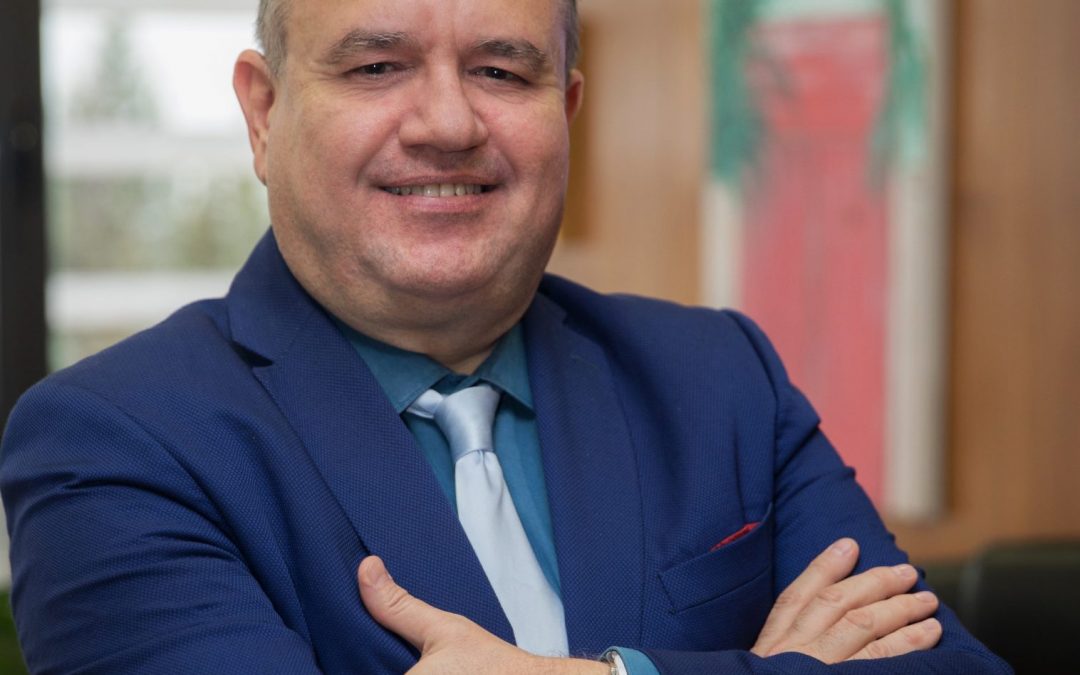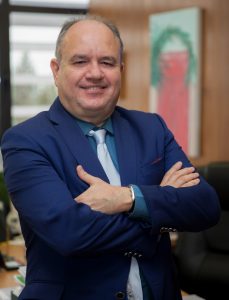
The SHOW project is unique in many ways, one of them being our 69-strong consortium. Our SHOW partners come from every corner of the transport sector across the EU, each bringing their own strengths and knowledge to the table. Safe to say we want you to meet them!
Next up is Greek research institute CERTH/HIT (Hellas Centre for Research and Technology / Hellenic Institute of Transport). The mission of HIT is to provide state of the art research and create innovation in the field of Transport in Greece and in Europe. We spoke to Evangelos Bekiaris, Director of HIT.

Can you tell us a bit more about your role in the SHOW project?
I’m the Technical and Innovation Manager of SHOW Project. Conceiving its vision long time ago, I had the opportunity to be one of the key initiators, being now responsible for paving the way towards the successful realisation of the project’s planned milestones, but more than that, towards the achievement of its breakthrough outcomes.
I am responsible for overseeing the technical progress of the project on a daily basis, applying proactive measures and mitigation actions, when required, and identifying innovative ways for the project to move beyond State of the Art. Minding, also, to ensure a constant compliance with industrial and research roadmaps as well as liaise with twinning and clustering initiatives on European and International level.
Beyond many other tasks, our team participates also in the organisation, technical support and conduct of the Pilot of Trikala Satellite and Thessaloniki Follower sites in Greece, for which, among other, it builds a TMC and prepares two automated passenger vehicles to operate in their context. Furthermore, HIT leads the Subproject responsible for organising the work around stakeholder needs, use cases, business and operational models as well as ethics, regulatory and legal aspects. It also leads the development of AI novel services and cooperative solutions for the interaction with other road users (i.e. VRUs). Finally, our team closely monitors and contributes to the iterative planning and execution of technical and field trials evaluation phases, supported and complemented by the simulation and impact assessment studies of the project.
How do you see the role of automation in advancing sustainable mobility?
Cooperative Connected and Automated Mobility (CCAM) is expected to contribute radically in a friendlier to humans and much more emission free environment and energy sustainable mobility context. The three main drivers for this are the reduction of vehicle km travelled by passenger cars and goods, of fuel consumption and of congestion.
Though the specific impact is still under exploration by research and industrial initiatives, automation in road transport is expected to enhance comfort, promote equal access and lead to cost-efficient mobility. One of the strongest points of CCAM is that it is by default more inclusive, especially when combined with smart user oriented DRT services.
The total number of vehicles on the roads can be remarkably reduced thanks to an intelligent combination of smart automated PT solutions (conventional PT assisted by first-mile and last-mile solutions realized through autonomous shuttles) and with individual mobility offering, by autonomous car sharing services.
While the number of cars in urban centres is increasing, the operation of automated cars in fleets as a service (automated MaaS) is seen as an alternative to car-ownership and, thus, a measure to reduce the number of cars in cities without reducing the accessibility, which is a clear contribution to SUMP objectives. This is supported by all recent studies (i.e. conducted by McKinsey, MIT).
Fewer vehicles on the roads would further mean fewer traffic jams and fewer vehicles to be produced; thus improved traffic flow and less energy consumed, which will be additional to the energy savings due to the electrified fleets. Electrified fleets will also reduce noise levels (up to 50%, in comparison to combustion engine ones).
All in all, quality of life improvement is the ultimate aim of Road Transport Automation.
Nevertheless, the contribution of AM to road safety (less accidents, smoothening of the driving behaviour), remains another important impact, to be achieved through platooning, C-ITS based safety systems, etc.
The pandemic has also revealed benefits in opting for AM, as hygiene automatic processes can be more easily adapted thus potentially turning this risk into an opportunity.
Still, it is important to stress that the most radically positive outcomes on every aspect can be only expected when a holistic transformational change will – rather progressively – happen in the transportation system, through combined sustainable solutions; automation being a core one, yet only one of them.
Why do you consider a project such as SHOW important for the sector?
SHOW constitutes the biggest initiative so far of its kind in Europe and beyond. Its bringing together 69 legal entities (OEMs, PTOs, Tier 1 suppliers, SMEs, Cities and Authorities, Associations, research & academia) from 13 European countries, further connecting 6 third parties and 60 associate stakeholders -a lot of them being competitors in the business world- and twinning with 11 organisations worldwide (from the US, S. Korea, Australia, Taiwan, Singapore, etc.).
It plans to transport more than 1,5 millions travellers and 350000 containers of goods, targeting a seamless real life operation of 12 months, through a combined AV fleet of over 70 vehicles of various types (bus, shuttle, pod, car) in mixed traffic and dedicated lanes with speeds from18 to over 50km/h in 20 cities across Europe, combining PT, DRT, MaaS and LaaS services.
As such, it is self-evident it will be a game changer in the field of shared CCAM.
Greece and our Institute’s participation in SHOW is a win-win situation. SHOW is a strategic initiative for Greece not only because it is technically led by a Greek institute, thus producing and transferring know-how in the country, but also because it will bring CCAM closer to Greek citizens and prepare them for the future.
It is evident that business and further research opportunities will flourish, not only in Trikala and Thessaloniki, where our pilot sites are located, but through replication actions in other regions of Greece, like for example our islands, where OEM’s have already started to invest on automation.
The Greek Pilot site in SHOW, has already influenced the beneficial revision of the legislation regarding AV pilot operation in Greece, which is a benefit for our country but also for the project as a whole, as it will allow flexibility in trying project solutions in real life and providing actual evidence on what is the readiness of a strategic South European country.
HIT, being the institute mandated on national level in Greece for conducting research and bringing innovation in transport, can be seen as the best ambassador of SHOW outcomes in Greece in all layers (R&D, policy), with the collaboration with all the other key players in the country in this respect.
On the other hand, being a member of all important Pan-European transport organisations, quite often even chairing them, such as ECTRI, creates a rich channel back to SHOW that benefits from feedback and liaisons on both stakeholders and R&D level. Furthermore, HIT has a long and vast experience in all fields of transport research, with significant landmarks to showcase in the sector and contribute to SHOW as well.
In what aspect do you expect SHOW to have the biggest impact?
SHOW will offer a solid basis for innovative follow-up initiatives, encompassing knowledge – materialised in application guidelines, policy and standards recommendations, data from all ends of the cooperative context upon all important KPIs, tools and upgraded holistic AV solutions for PT in urban and peri-urban context, integrating vehicles, physical and digital infrastructure and mobility services in PT, DRT, MaaS and LaaS modes.
It will also provide significant evidence about the potential for real life and systematic deployment of shared CCAV in the near future, assessing user acceptance and cost-efficiency of the CCAM solutions and their impacts on road safety, sustainability of the urban mobility, driving behaviour, traffic efficiency city, logistics and the environment.
More importantly, SHOW impacts and value added will be replicated and projected through a pool of so-called follower sites, beyond the time and geographical boundaries of the project. In the same context, bringing together 13 different OEMS and PTOs, we not only expect to contribute to standardisation and interoperability protocols, but coupling the above with the rest stakeholders of the chain (Tier 1 suppliers, authorities, service providers), we anticipate to build real-life local ecosystems, that we wish to outlive the project and excel creating new business opportunities and advanced quality of life for all travellers; citizens and tourists alike.
In a nutshell, I consider SHOW as a unique effort to bring the most advanced players of Europe in the AV sector together and use Europe as a varying, still connected, fascinating ground for shifting sustainable urban mobility through automation from a dream to an everyday reality.